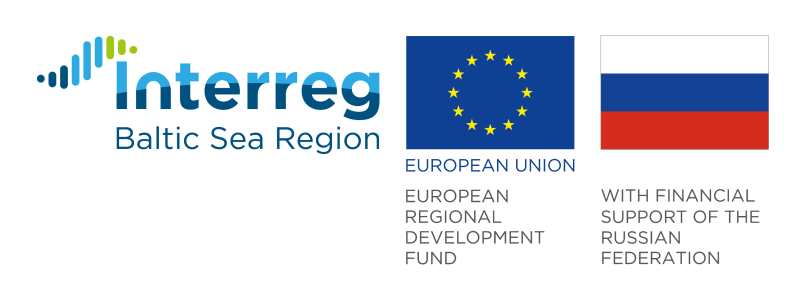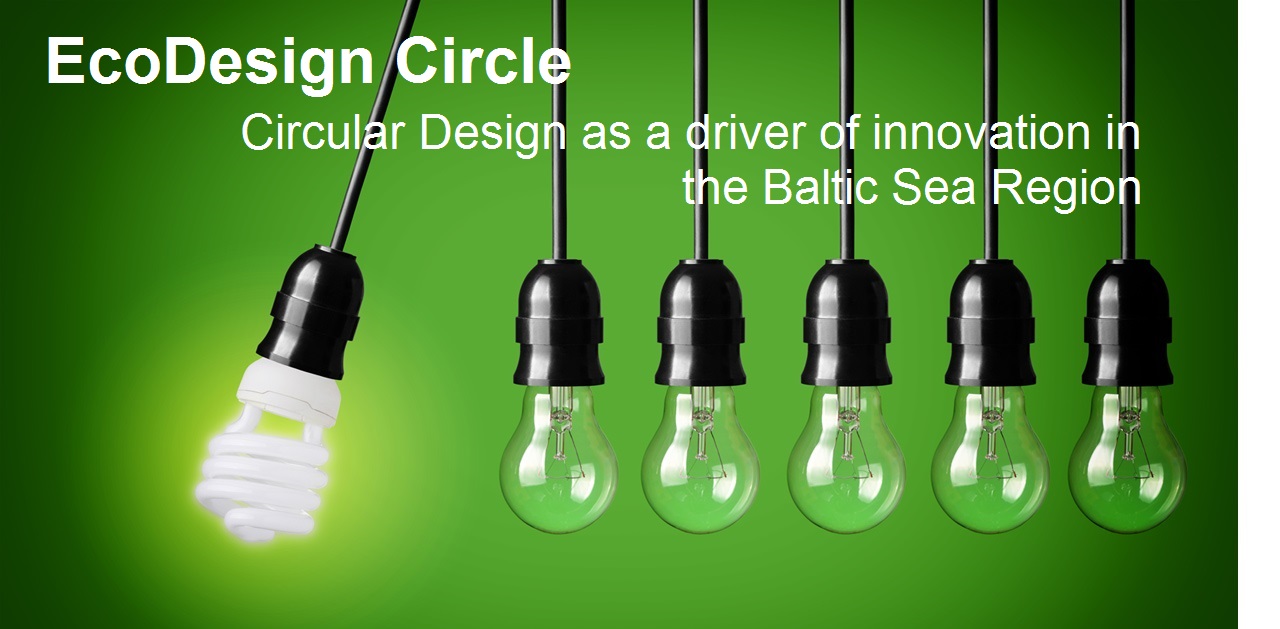
photo: IDZ / Kühnapfel Fotografie - Circular Design Forum, Berlin (2018) session about mindsets
Almost everyone agrees: circular economy is a model that helps us to maintain or increase prosperity within the planetary boundaries. But how can current structures based on linearity be transformed into circular systems? What are the opportunities for companies and organisations? How can circular business models be developed? How can local authorities and urban planners, for example, support this? The Finnish consultancy Ethica offers expertise in circular economy, carbon neutrality and sustainable business development combined with creative problem-solving approaches. The design approach plays a decisive role here.
We talked to Anne Raudaskoski, one of the founders of Ethica, about her approaches and experiences from everyday practice.
How did Ethica come about? How did it all start?
Actually, it is a very nice short story. Nearly seven years ago my business partner Paula Fontell and I set up Ethica. We didn’t know each other before. Believe it or not: we met for lunch in early 2013 and three months after that we had set up Ethica. We both had a dream to start a consultancy. And we clearly realised during the lunch that we had a very ambitious vision on how we wanted to do it: sustainability needs to be embedded in the company’s strategy and R&D work instead of being a separate programme. Paula had previously worked at Nokia on corporate social responsibility issues and I used to be a sustainability manager at the University of Westminster. Very quickly after establishing the company, we started focusing on circular economy and circular design. Our way of working at Ethica is to create very tailored solutions. The fundamentals of circular economy do not change, but each company’s focus areas and path to circularity are very different. Hence, we always explore together with our clients what their unique circular business opportunities are.
Why did you focus on circular design in your consultancies from the very beginning? This is a rather unusual approach for sustainable business consultancies so far, isn’t it?
I am not a designer by training, but I used to work in the field of design before we set up Ethica. During those couple of years, I have noticed that the challenges and opportunities are similar in design and sustainability. Both sustainability and design are really necessary approaches for companies to help them succeed. But it has to be done in a strategic way. I have often followed discussions in which companies didn’t quite grasp the core idea of what design can actually do to help their company. And I felt quite the same with the sustainability approach. So the seeds of design were already planted and when we started developing our service portfolio I started harnessing the design approach in the sustainability context.
Another important milestone for me came from my work with Arthur ten Wolde of the Dutch organisation “De Groene Zaak” in 2015. Our work resulted in our report on boosting circular design for a circular economy including recommendations how to make the EcoDesign Directive more circular. Because at that time it was very much about energy efficiency …

photo: Ethica Finland - Keynote from Association of family-owned businesses seminar 2019 (Perheyritysten liitto)
How satisfied are you with the current development of the Ecodesign Directive? For the first product groups, additional requirements, such as for reparability have already been introduced, helping to prolong lifetime and thus achieve the goals of the circular economy.
I am very pleased to see those kinds of topics being addressed but there is much more to do. One of those aspects is material health which is not yet addressed. It means “designing out” toxic and hazardous materials & chemicals. And I think it is a crucial aspect if we really want to get into a situation where we have only safe and endlessly circulating material cycles. Fortunately, the EU Circular Economy Action Plan 2.0 addresses the aspects of reuse and remanufacturing. The Plan also states that the EU will “accelerate the transition towards a regenerative growth model that gives back to the planet more than it takes” and “double its circular material use rate in the coming decade”. This is a truly powerful commitment and sets a clear direction for businesses.
In recent years, you have been closely involved in creating the circular business development programme “EcoDesign Sprint” and its piloting in the Baltic Sea region. How did the format come about? What did you learn from the implementation?
Basically, the Sprint combines elements from the widely known Sprint models with what we do at Ethica through our business development services. In our approach, the work always starts from the vision, then we cast back from the vision back to current state and start creating steps towards a desired future. We create a very comprehensive picture of the entire business operations. Design Forum Finland had offered a Sprint in previous years similar to Google Sprints that lasts five days. But five-day Sprints require a lot of staff resources and therefore, we narrowed it down to three days. The biggest change and a new idea was to introduce design agencies as part of the team. I think that is a brilliant approach when a circular economy coach and professional designers come together and the interdisciplinary team focuses on the client company. This is really unique and fruitful to the company. To date we have run seven full Sprints and a one-day-Sprint in Lithuania.
Of course, this all happens on a high level; there is no way to dive into details within three days. But from the feedback we got from the participants it really opens their eyes in terms of what could be done and what circular economy and circular design thinking can provide to that company. In my opinion the EcoDesign Sprint is a brilliant way to kickstart “circular changes”. It creates shared understanding of what circularity means to the company and where the best opportunities exist.

photo: Lithuanian Design Forum - EcoDesign Sprint in Lithuania, January 2019
In recent years, the circular economy – the comprehensive model going beyond closing loops through recycling - has become increasingly important. Do you notice this in your professional environment? What has changed? How is it in Finland? Or is “Circular Economy” just a new buzzword?
There has been a significant change for the better in the last few year years, for sure. I’m seeing the same trend here as happened some years ago with sustainability and corporate social responsibility. Being able to communicate at least some CSR or sustainability actions became a kind of image factor for a company. Even if they were not doing much, companies still needed to be able to say: yes, we are addressing the topic or we have done this pilot project, or we integrated these aspects into our annual reporting. We are not quite there yet with circularity but approaching the same image factor effect. Although the term is still sometimes misinterpreted to mean more efficient recycling - a misunderstanding - the importance of circular economy has definitely become widely understood on the executive level.
One thing I am really pleased about it is that the climate change discussion has merged with circularity. Circular economy as an enabling mechanism has found its place not as a separate goal but something that enables climate change mitigation and helps us to live within planetary boundaries. These are the two sides of the same coin. It often happens that our clients tell us that right now they’re working on carbon-neutrality roadmap and therefore cannot yet focus on circular economy. However, during our workshops the participants realise that actually they need to address the material flow management as part of the carbon-neutrality work because the majority of emissions results from linear material management.

photo: Lithuanian Design Forum - EcoDesign Sprint in Lithuania, January 2019
Is there an example from your consultancy practice or an experience about circularity that impressed you in particular? Why? What makes it so “special”?
“Puusta kiertotalousbisnestä” … It was a SITRA-funded project about circular economy business from wood. During this project we worked among others with a Finnish cosmetics company, Lumene, using our circular narrative approach: How do you actually market circular products? How do you create demand and interest towards your circular product? How to differentiate them from “traditional” products? A great mixture of Lumene people from different departments took part in a series of workshops. Like always we started from a powerful and positive vision before going into marketing messages. And they were really pleased with the process and outcome. They basically said that our approach had turned their thinking upside down.
Circular narrative approach sounds promising. But how close is it to greenwashing and buzz-wording? How can greenwashing be identified? And even be prevented?
If you have created an ambitious vision with an action plan and make it public, that’s your backbone against greenwashing claims. The vision and action plan allow you to tell others about your circularity efforts even if you are not there yet. Because then you can say: this is what we are aiming for, we know we have still a lot to do but we are trying our best and have a solid plan. That’s why the vision is so important. If you don’t have anything to aim for it is far easier to get “crucified” for greenwashing.
But how to prevent greenwashing? I think we probably need a real alternative way to measure enterprise success in the future. In addition to monetary budget there could be a carbon budget or even a planetary boundaries budget.

Photos: Medina Art / Elena Gontarenko & Marina Lebedeva - EcoDesign Sprint in Saint Petersburg, Russia
Often, piloting happens in enterprises already advanced with regard to environmental aspects. How can we reach the “average companies” with the circular approach?
This is one of our major challenges … I totally agree with you that rather than “preaching to the converted” we need to reach out to those who are not yet familiar with the circular economy at all and get them on board. Even if they have nothing planned yet, they hopefully get interested and realise there is a connection in what they do … But I have to be honest: in most cases our client companies or organisations have circularity quite high on their own agenda.
But there are several national and international projects similar to EcoDesign Circle which help to create more awareness, such as Circvol in Finland. There is also a Finnish Sustainable Communities network and recently a national circular economy working group was set up to create an action plan with key performance indicators in Finland. All those initiatives help to create more awareness. And they also engage with those parties and companies that would not otherwise get interested in these topics.
Do you have a concrete example from your work of how policy takes up and promotes design for a circular economy? Can you tell something about it?
I would highlight the Lahti region, called Päijet-Häme in Finnish. They created their regional Circular Economy Roadmap two or three years ago. We did a small project with them last year, both with the urban developers of the city of Lahti and with the University of Applied Sciences, called LAB, because they asked for our feedback while updating the roadmap. I was there to give a presentation about our evaluation and I was really impressed what has happened, is ongoing and is planned also with respect to circular design: They’ve created different initiatives and offers for residents of Lahti, such as, how to calculate the carbon footprint. They had pilots on repair and sharing services, tested how people made use of them. They want to run Sprints, similar to our EcoDesign Sprint with regional companies. … I think they’ve managed to build the roadmap in a really holistic way: thinking about residents, thinking about businesses, engaging with them and the city itself as an organisation … They have an ambitious and very concrete plan. That is a really good example to follow. And by the way, the city of Lahti will be the Green Capital of Europe next year …

photo: Ethica Finland - presenting the findings of Designing Plastics Circulation report (Nordic Council of Ministers) at the World Circular Economy Forum 2019
If you were the “circular economy fairy” for a day, what would you love to do? What would be your priority actions?
I’d love to be a circular economy fairy … and probably I would want to run the EcoDesign Sprint with all the companies. From the experiences I have, it has really shifted their thinking what the circular economy could offer them and actually realising that it is the foundation for their future strategy. In my view circular economy has to be the foundation for every business strategy! We can’t have any other future than a carbon-neutral and circular … That’s our best opportunity. And we need somehow to get companies to realise that this is the best course to take.
From our Finnish context … there was a study conducted by SITRA quite a few years ago already where they listed all the government support that is actually funding linear and polluting industries. If we started to shift all that funding towards green and circular companies that would be a real success. Then we can talk about taxation and other legal instruments, but a starting point is to make sure that we are not going against the circular economy model through our policy and funding.
Do you have some tips for other facilitators working in the sphere of circular design and circular business development?
In our team at Ethica, we have designers, engineers, industrial ecologists and business developers like Paula and myself. You can’t be an expert in everything … But as a circular economy expert you need to be skilled and constantly updating the following: 1) natural ecosystems 2) circular business perspective and 3) circular design. Without learning to restore and regenerate our natural ecosystems there cannot be successful business. I quote here a Chairman of the board of the Baltic Sea Action Group and environmental activist Saara Kankaanrinta, who said that “the world is biological, although we try to squeeze it into a digital, technological, industrial or mechanical box. Only when we understand this it is possible to talk about sustainable life.”


